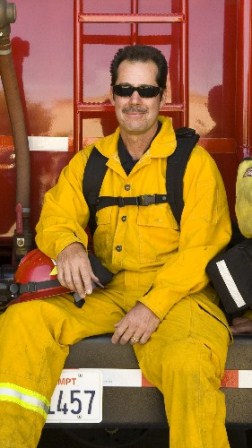The Sierra Sun has a rambling article about the California Dept. of Forestry, now called CalFire, being sued, according to the suit, for partially demobing a fire before it was 100% contained. Apparently the strategy and tactics that were used on the fire are being questioned in a court of law 4 years after the fact.
If this sets a precedent, holy shit, what’s next? Firefighters have enough liability to worry about just fighting fire every day, or heaven forbid, when someone gets injured or killed on a fire.
Is your professional liability insurance paid up?
Here is an excerpt:
“What if the fire department runs out of water while fighting a structure fire or has a flat tire and doesn’t make it to your house? Or what if the California Department of Forestry and Fire Protection), now called Calfire, has a brush fire 90 percent contained at 1,200 acres, and begins demobilizing, then the fire burns out of control consuming 64,000 acres? That’s what happened in the Piru Fire in Ventura County.
Piru Fire
On Oct. 23, 2003, a spark from construction equipment operated by the United Water Conservation District started a brush fire near Lake Piru. Within two days, after 1,200 acres had burned, Calfire had the blaze 90 percent contained. They began to demobilize. Ten days later the fire burned itself out after consuming some 64,000 acres of forest land.
Fire liability
Public entities are entitled to be reimbursed for the cost of fighting fires that are negligently set or allowed to escape onto public or private property. Under the Health and Safety Code, fire agencies may recover their reasonable expenses incurred in fighting a fire.
Two years after the Piru fire, Calfire sued United Water Conservation District seeking reimbursement of its fire fighting costs in the amount of $3,871,695.
Calfire at Fault?
Did United Water Conservation District write a check for $3,871,695? Of course not or we wouldn’t be reading this new case. The water district defended the lawsuit claiming Calfire was “comparatively at fault” and “failed to mitigate damages” (legal mumbo jumbo but you get the idea) by failing to properly extinguish the original, smaller fire, thus allowing the larger blaze.
In other words, Calfire’s firefighting costs should be reduced to what it had incurred when the fire was 90 percent contained at 1,200 acres when it “failed to douse the flames completely and instead began to demobilize its fire fighting resources,” as alleged by United Water.
Court ruling
The Court of Appeal agreed with United Water Conservation District that it could question particular Calfire expenses as to whether they were excessive or unrelated to the Piru fire, but it could not question whether Calfire improperly pulled off the fire as decisions regarding sufficient personnel, equipment and fire fighting methods and tactics are all subject to the fire agency immunity statutes. No liability.”
 Taken in 1972 on the San Bernardino NF after we got chased out of the fire and hung out at a safety zone.
Taken in 1972 on the San Bernardino NF after we got chased out of the fire and hung out at a safety zone. A TBM making a drop near our fireline in 1972.
A TBM making a drop near our fireline in 1972.






